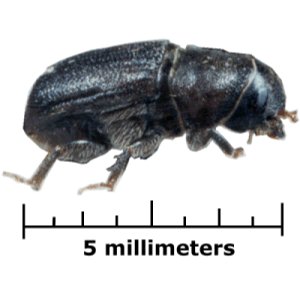Facts About Mountain pine beetle
The mountain pine beetle, a species of bark beetle, is indigenous to western North America, ranging from Mexico to central British Columbia. These beetles have devastated lodgepole pine forests, destroying millions of acres of trees in regions such as British Columbia and Colorado. Experts attribute this massive outbreak to a combination of hot, dry summers, milder winters, and aging forests filled with mature lodgepole pines. It is considered one of the most severe forest insect blights in North American history.
So, how do these beetles kill trees? They lay their eggs beneath the bark and introduce a fungus that obstructs the tree's ability to transport water and nutrients, ultimately causing the tree to die. Various methods are employed to combat these infestations, including pheromone baiting, sanitation harvesting, and controlled burning. The beetles go through several life stages: egg, larva, pupa, and adult. Fortunately, they have natural predators, such as woodpeckers and other insects.
Utilizing trees affected by beetles commercially is challenging because the timber quality deteriorates after infestation. While the wood remains usable for a few years, its value declines rapidly. Some initiatives aim to use these beetle-killed trees for biofuel production, helping to reduce fire hazards and create new economic opportunities. Researchers are also investigating the impact of beetle infestations on the carbon cycle and water resources, with mixed findings on the long-term effects.
The current outbreak has severely impacted vast areas in British Columbia and parts of Alberta, raising concerns about increased fire hazards and forest management challenges. Efforts to address the problem include fuel management activities and the removal of hazardous trees. Scientists continue to study the outbreak's effects on the carbon cycle and water resources to better understand its broader environmental implications.

 Canada
Canada